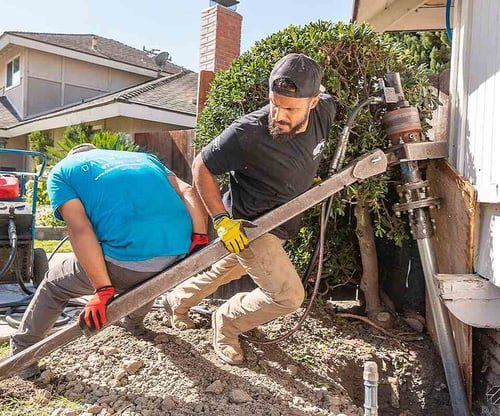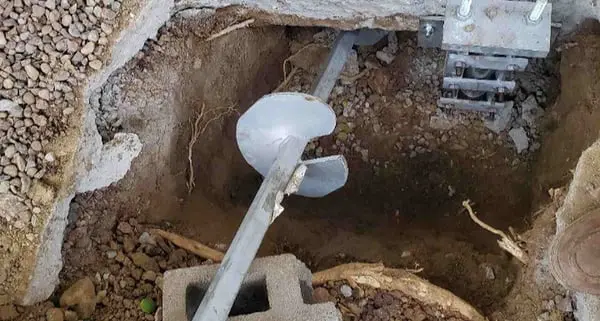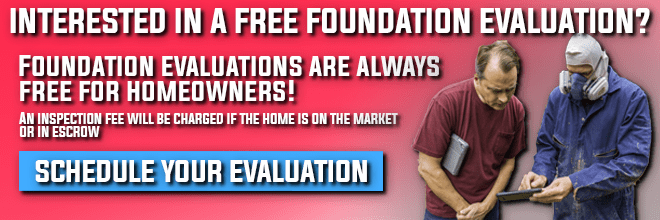You are reading this article because your foundation repair specialist suggested helical piers to combat your home’s foundation settlement or heave. Or you’re conducting your own research and want to learn the pros and cons of helical piers before reaching out to a foundation repair contractor.
In short – you want to be an educated consumer. It’s more important than ever to educate yourself on the materials, processes, and pros/cons of underpinning foundation repair.
Dalinghaus Construction is here to provide a clear, unbiased encyclopedia of underpinning knowledge. We never settle, neither should you.
While helical piers are often considered in the foundation repair industry, the peak of foundation repair, they present specific complications/limitations – every silver lining has a cloud.
In this article, we are going to cover:
- Helical piers require ample installation room
- Helical piers are permanent
- Helical Piers are more expensive than push piers
- Helical Piers don’t handle dense/rocky soil well
So, let’s dive right in.

1. Helical Piers Require Ample Installation Room
Helical piers do an outstanding job at stabilizing foundations and retaining walls, but they require plenty of installation room. Helical piers are difficult to install in tight spaces, such as side yards or areas confined by fences.
In addition, occasionally we install helical piers in the interior of a home – space is definitely a serious consideration here.
Helical piers require ample room due to their installation process. Helical Piers are screwed down to competent, load-bearing soil through extreme torque via a hydraulic torque motor.
7-9 feet is required for the torque bar which connects to the hydraulic torque motor.
Torque bars are used to stabilize the motor. The torque bar prevents the motor from spinning, harnessing the circular force to screw down the helical piers.
These hydraulic torque motors are big, bad pieces of equipment. They’re large, always requiring 2 men to run. The torque bars are held in place during the installation process. On the other hand, push piers only require one person per pier location.
So, if your yard is a tight, confined space, it can make the helical pier process somewhat tricky.
2. Helical Piers are Permanent
Once installed, helical piers are permanent. Now, you’re probably thinking permanence doesn’t sound so bad. In fact, it’s one of the primary selling points of helical piers, a point we push in our lifetime steel pier system warranty.
However, where this becomes tricky is with new home additions. Helical piers, for example, cannot be unscrewed from the earth and relocated to support the two-car garage.
New additions require new piers, plain and simple.
3. Helical Piers are More Expensive Than Push Piers
Helical piers cost more than push piers. Why? Because they’re a specialized piece of equipment, the helices allow the piers to lock into competent, load-bearing soil.
Conversely, push piers simply support the structure they are underpinning – they do not lock into place. This is similar to comparing nails to screws. Push piers rely on skin friction to generate their load capacity.
In addition, helical piers require more manpower and time to install. This directly translates into paying for the additional labor and extended timeframe.
So, due to the specialized nature of helical piers and the fact they require more manpower and time to install, they are more expensive.
Currently, Push Piers cost an average of $2,100 to $2,500 per pier in SoCal and Arizona. Push piers cost an average of $2,500 to $3,000 in Southern California and Arizona.
4. Helical Piers Don’t Handle Dense/Rocky Soil Well
Helical piers don’t handle dense or rocky layers of soil particularly well. Conversely, push piers can penetrate this type of soil with ease. It’s easier to push straight into rocky soil than to torque your way down.
In situations where we hit layers of rocky soil, we will often try switching to helical piers with smaller helicals. These smaller helicals have less friction and occasionally allow us to “sneak through.”
We perform a Dynamic Cone Penetration (DCP) test. If we get a blow count of 30-40, this is considered a stopping layer for helical piers. So, we abort the mission and immediately switch out for push piers.
Be sure to also read our article: What are Problems with Underpinning by Push Piers (4 Potential Limitations).

Choose Dalinghaus for Your Underpinning Needs
In conclusion, helical piers are not always the right fit and come with their own unique complications and limitations.
Be sure to check out our Ultimate Foundation Repair Guide for more information on helical piers.
Your time is valuable and we respect that. If you choose Dalinghaus, you will receive a repair plan tailor-fit to meet your specific needs.
Dalinghaus Construction Inc. can help you fix your sinking foundation once and for all with helical pier, push pier, and polyurethane underpinning.
We do foundation underpinning and retaining wall repair the right way. With over 100 years of combined experience and 4.9 stars out of over 300 reviews – we are here to ensure that you never settle.
Read more – Why Your Home Remodel Needs a Strong Foundation?
If you live in SoCal or Arizona and would like a FREE crack inspection, click the link below –







